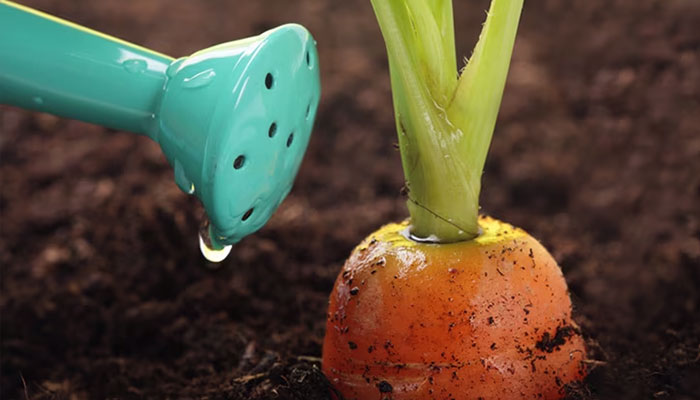While we believe that the books and resources recommended may be of value to you, keep in mind that these are suggestions only and you must do your own due diligence to determine whether the materials are appropriate and suitable for your use. PNC has no sponsorship or endorsement agreement with the authors or publishers of the materials listed.
LESSON CATEGORY

Rooting for Plants!
Children will learn about root plants and how they grow.

Lesson Objective
The children will be able to identify a root plant and how a root plant can grow without a seed.
Science
What You'll Need
- Carrots with green tops still attached – 1 per child
- Magnifying glasses – 1 per child
- Knife (for adult use)
- Cutting board
- Marker
- Shallow disposable baking pans – 1 for every 4 carrots to be planted
- Sand – a gallon-sized bag per pan
- Water
- Chart paper
What To Do
Note: The carrot tops will take about 1 week to grow.
- Give a carrot and magnifying glass to each child.
- Activate background knowledge and ask the children to describe the carrot. Record responses.
- Discuss that the orange part of the carrot is the root, which grows underground. Explain that the spot on the carrot where the leaves begin to grow is called the growing tip.
- Explain you will be planting the carrot and observing its growth.
- Cut the green tops off the carrot without cutting into the orange part. Cut the bottom off the carrot, leaving about 1 inch of orange.
- Fill the pans with sand and demonstrate how to push the carrot tops into the sand. Allow each child to plant their carrot top.
- Place the carrots in a bright window location and water the carrots daily.
- Check the carrots daily and discuss what is happening (the new leaves will grow in less than 1 week).
Resources
Home School Resources
Home educators: use these printable lesson PDFs to teach this lesson to your home schoolers. They're available in English and Spanish.
Content Provided By
Common Core State Standards Initiative – These lessons are aligned with the Common Core State Standards ("CCSS"). The CCSS provide a consistent, clear understanding of the concepts and skills children are expected to learn and guide teachers to provide their students with opportunities to gain these important skills and foundational knowledge [1]. Visit the CCSS



